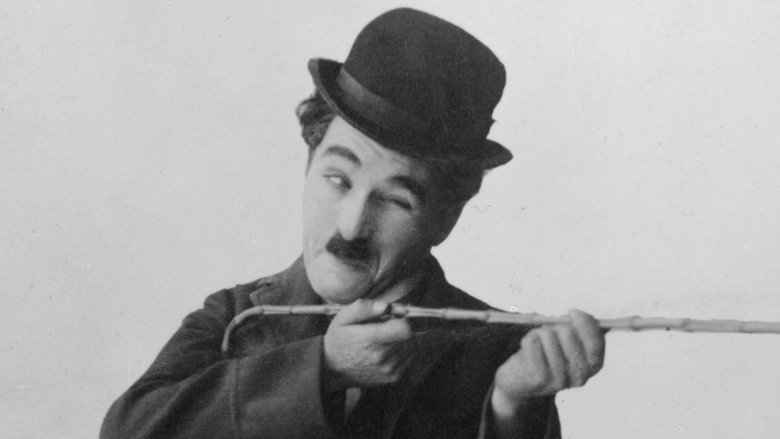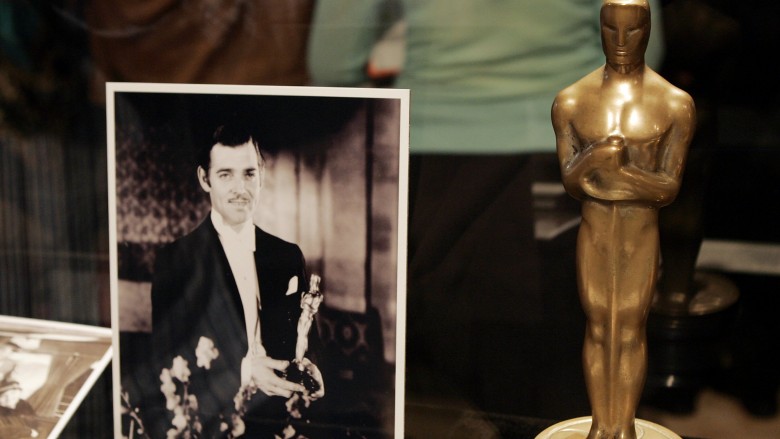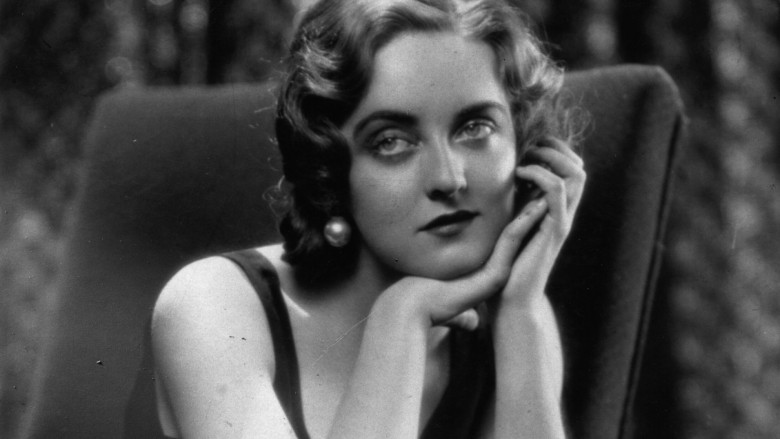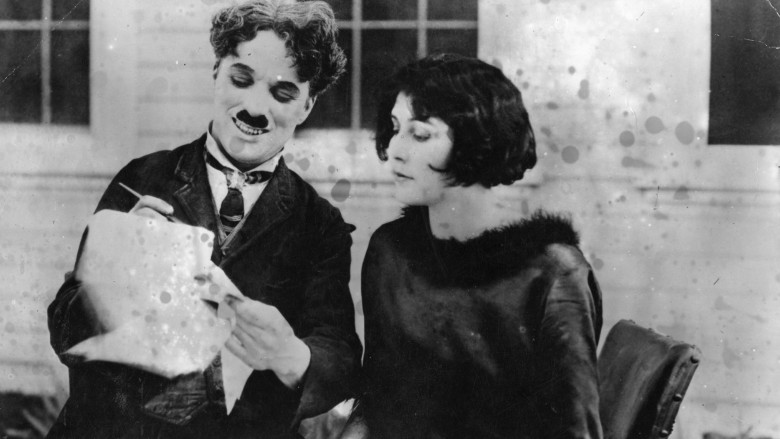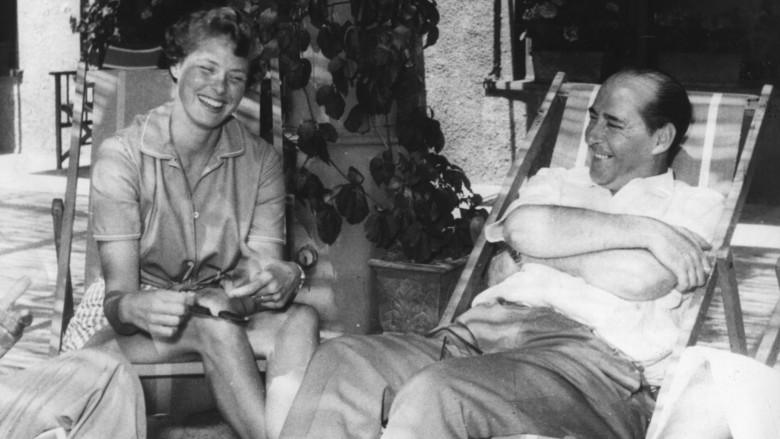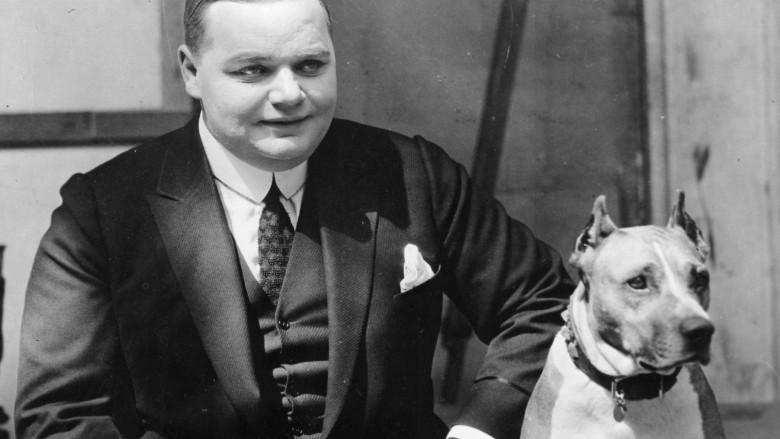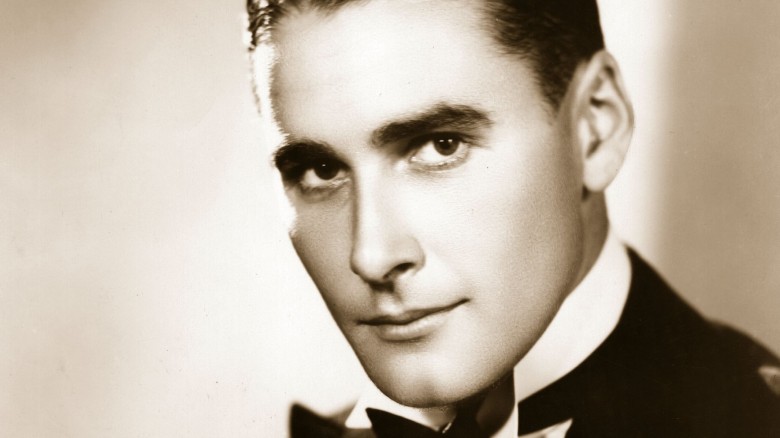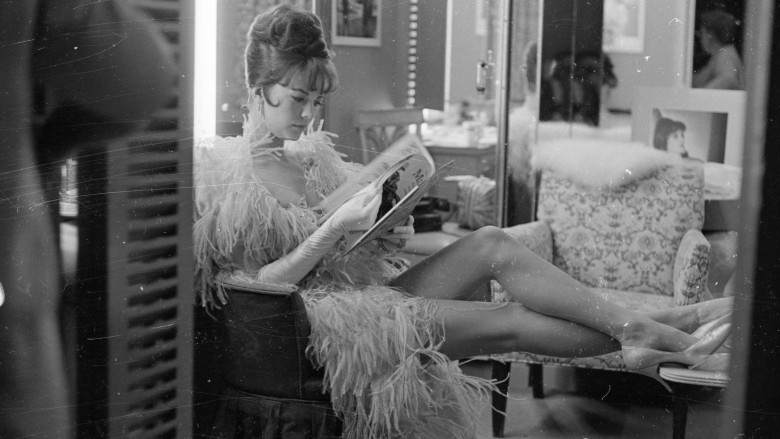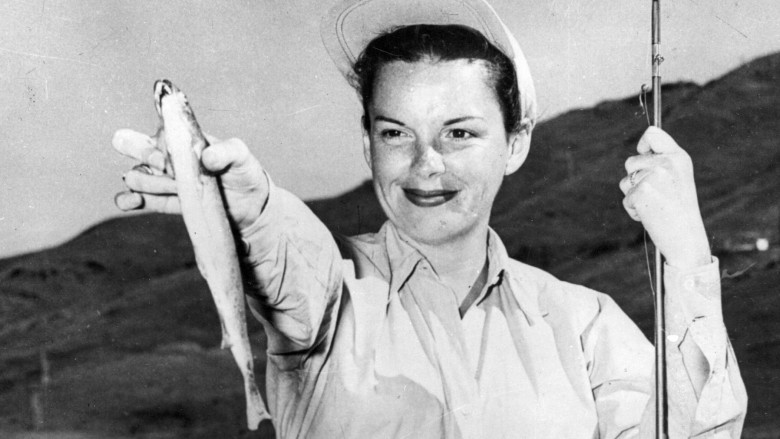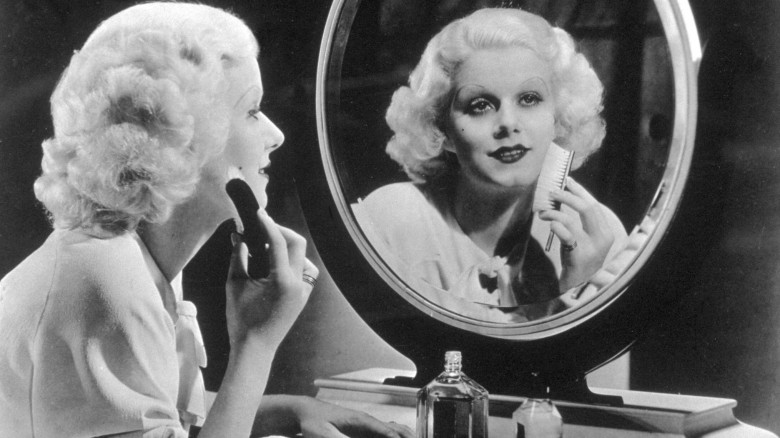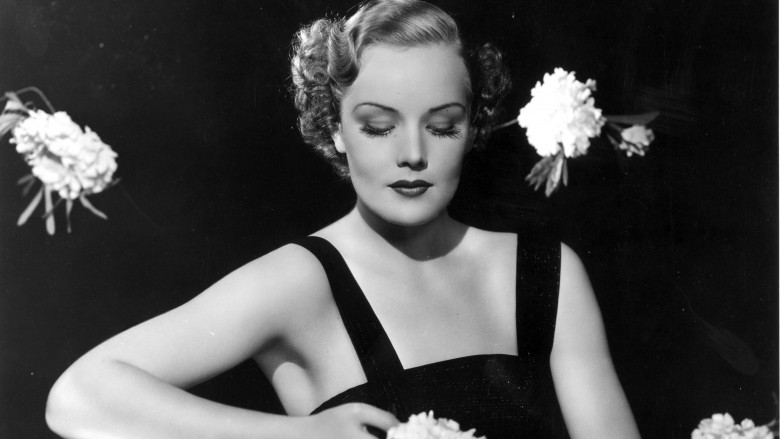Scandalous Stories From Old Hollywood
intro
There's a certain undeniable elegance about old movies. We like to think that it was a better, more honorable time, where the men were gentlemen and the women were ladies. Chivalry still existed, and so did romance. That might be true onscreen, but behind the scenes, Hollywood players were just as screwed up then as they are today. Sometimes, they made the juiciest of today's gossip look like it was written by a devout Christian doing his best to be edgy ... and failing miserably.
Clark Gable's illegitimate child (and Loretta Young's heartbreaking realization)
Clark Gable was more of a creation than an actor. Early in his career he was coached by MGM executives who turned him from an amateur stage presence into one of the biggest stars in Hollywood. Along the way, he was married five times, was never faithful to any of his wives, and had such a relentless fling with Joan Crawford that MGM threatened to fire them both based on the morality clauses in their contracts. (Of course, everyone in Hollywood probably laughed as they signed those and then celebrated with a booze-filled orgy.)
Fast-forward a bit. In 1934, Clark Gable starred in Call of the Wild with a much younger Loretta Young. Yes, Gable was married at the time, to Maria Langham. Meanwhile, Young was such a devout Catholic that she insisted on a swear jar for on-set expletives, to which Spencer Tracy reportedly said, "Here's a twenty, sister. Go f**k yourself." After filming, Young headed off to Europe for a few months before returning to California. About 19 months later, she announced that she was going to adopt a young girl and picked one up from an orphanage. The girl was Judy, and she was the one Young had actually given birth to in California, after going to Europe to hide her pregnancy. It was a stunt that was only possible pre-internet.
In 1966, Young finally told not-so-little Judy the truth: her father was Clark Gable. But Young would never publicly admit that she was her own biological daughter, and that's not even where the real heartbreak comes in. Young beat the Hollywood odds, living to a ripe old age. It wasn't until she was an 85-year-old watching Larry King Live that she was introduced to the idea of date rape and asked her daughter-in-law to explain what it meant. Young's response was simply, "That's what happened between me and Clark."
Her memoirs were published after her death in 2000, describing a girl who grew up poor but beautiful, whose devout religious upbringing shamed her into silence.
Howard Strickling's role as 'The Fixer'
Loretta Young wasn't the only star facing the problem of having a child that wasn't planned, but most went to MGM head of publicity Howard Strickling to fix their inconvenient problem. When actresses withdrew into seclusion for "rest" or an "appendectomy," it was code for abortion. According to Tallulah Bankhead's biographer, she got "abortions like other women got permanent waves," and the list of women who had Strickling on the 1930s equivalent of speed dial was a long one. Biographers for Jean Harlow, Joan Crawford (who was also pregnant by Clark Gable), Bette Davis, Lana Turner, and Judy Garland all say they went to Strickling, sometimes not entirely willingly. Garland's abortion affected her for life, but when Davis later had children, she was reportedly proud that she could conceive and carry even after all the abortions she'd had.
At the time, movie studios were banking on being able to market their female stars in a very particular way. No one would buy a blonde bombshell who was a wife and a mother, and in other cases (like Judy Garland's), no one was going to believe a woman could be sweet, innocent, and virginal when she had a child out of wedlock. So, when faced with making a choice between their career or a child, many chose to call Strickling for an appointment with his friend, "Dr. Killkare." Sounds like a horror movie waiting to happen.
The mysterious murder of Thomas Ince
Don't recognize the name? Thomas Ince worked behind the scenes, and he's known as one of the first tycoons of the film industry. He also died in an incredibly suspicious way.
Ince was the first to use a script, and he was also behind the creation of the first movie studio complete with things like sets and sound stages. His company would eventually become MGM. After he sold MGM, he founded Paramount Pictures and sold it, too. But in 1924 his new studio was failing, bankruptcy was looming, and he set out on a cruise in honor of birthday number 42. The yacht he was on belonged to newspaper mogul William Randolph Hearst, and the guest list included Charlie Chaplin and actress Marion Davies.
The official story says that Ince developed acute indigestion after dinner. He was taken from the yacht, supposedly to the care of a doctor at a Los Angeles hotel. He went home the next day and died. The official cause was heart failure, but there were whispers that it wasn't so much "heart failure" or "indigestion" as it was "a bullet." According to the rumors, Hearst had stumbled upon Davies (who was his mistress at the time) and Charlie Chaplin getting a little frisky. In a jealous rage, Hearst tried to kill Chaplin, missed, and killed Ince instead. There's some evidence of a cover-up, as Ince's wife was awarded a mysterious trust fund and another witness was given a lifetime employment contract. So what really happened? No one knows; Ince was conveniently cremated very, very quickly.
Ingrid Bergman denounced as 'a powerful influence for evil'
Old Hollywood might seem obsessed with preserving the innocent images of their stars while all sorts of shenanigans were going on in the background, but the fallout over Ingrid Bergman's personal life would leave no doubt about how people felt when they found out their idols were incredibly human.
Bergman was married to a doctor named Petter Lindstrom when she hooked up with the Italian director Roberto Rossellini. With Rossellini, she had a child — also named Roberto — and they started divorcing their respective spouses so they could marry in 1950.
If you've ever read the Twitter storm that happens when someone makes a snide comment and things get out of control, that's nothing compared to what Bergman and Rossellini went through. Even the U.S. Senate got involved, with a Colorado senator going so far as to denounce her behavior and call her "a powerful influence for evil." That was in March 1950, and the senator didn't let up, either. By fall, he was calling Rossellini a "Nazi collaborator inspired by cocaine," and the whole affair led to a brief (and failed) movement in the government that tried to make filmmakers and stars responsible for their behavior, ordering them to apply for government permits to make movies that could be revoked any time there was anything morally shady going on.
Stories vary about whether the U.S. forbade Bergman to return or if she left voluntarily, but she lost custody of her first daughter, Pia, either way. In 2015, Bergman's daughter, Isabella Rossellini, told Reuters, "Mama of course was very hurt because she could not see her daughter from her first marriage. She was hurt by the scandal, she felt she paid such a high price for it but eventually it was resolved. She made peace with it."
Fatty Arbuckle's murder trial
It — whatever "it" was, exactly — happened on Labor Day in 1921, in Room 1219 at the Westin St. Francis Hotel in San Francisco. "It" led to the death of an actress named Virginia Rappe, and that, in turn, led to Hollywood's first high-profile scandal.
Before then, Fatty Arbuckle was a massive Hollywood star. He was one of the comedic greats, the first star to be worth a million dollars, known as the king of slapstick. And in 1921, he was the unlikely defendant in a murder trial.
All that's really known for sure is that both he and Rappe were guests at a booze-filled Labor Day party. (The only real problem with that was that Prohibition started one year before.) It was afternoon when Rappe's screams brought people to the suite, and she died a few days later. According to Arbuckle, he had brought her upstairs to rest because she had been complaining of exhaustion and difficulty breathing. He said he had gone into the bathroom when she collapsed in the room. According to the public, he had killed her during an attempted rape. The evidence against him was pretty simply Rappe's words: "He did this to me."
There was no evidence of sexual assault, and she was fully dressed when she was found. She suffered from a chronic condition called cystitis, or bladder inflammation. Her cause of death was peritonitis and a ruptured bladder. The accusations of rape first came from Rappe's friend, Bambina Maude Delmont, who would tell police that Arbuckle had raped her. Delmont would never take the stand at the trial, as she admitted that she had tried to blackmail him and other powerful men she procured girls for.
After three trials, he was finally acquitted. His career was ruined, though, at least as Fatty Arbuckle. Will B. Good tried to make a comeback, and strangely, discovered a young comedian named Bob Hope before dying of a heart attack at 46 years old.
Errol Flynn's underage girlfriend
Everything about Errol Flynn's final fling is disturbing on multiple levels. We'll start with the fact that he was 48 and estranged from his third wife when he first hooked up with the 15-year-old Beverly Aadland in a tryst that, according to her, was nowhere near consensual. She also said that she eventually did fall in love with him and spent the two years before his death traveling the world with him.
It's somehow even creepier than it sounds. By the time they got together, Flynn's career was at an all-time low, in part because of his persistent drunkenness, and in part because of debt, lawsuits filed by a few ex-wives for back child support, and allegations of sexual assault involving two underage girls (but not Aadland). When Aadland finally went public in 1996, she wove a bizarrely fascinating story of their life together. According to her, there were plans for them to marry (their engagement was announced at her 17th birthday party), have children (he reversed his vasectomy), and move to Jamaica (a house was being built and a wedding chapel renovated). She referred to their relationship as a "game," where he did hilarious things like arrange to have her arrested on bogus charges in France. He'd also "pretend" to beat her in public, and when she'd douse herself in ketchup to simulate blood, they'd revel in the hysterics of the people around them.
All in good fun, she said! She also described herself as a surrogate daughter for him. (We warned you it was going to get creepier.) They were going to call their baby Woodland, as he called her "Woodsie" because he was fond of saying she reminded him of a wood nymph. Two years into their relationship, he died of a heart attack.
Natalie Wood's abusive mother
Some stories from the heyday of glamourous Hollywood are disturbing, but Natalie Wood's story is just heartbreaking. She's most famous for the mysterious way she died, on a yacht with her husband, Robert Wagner, and Christopher Walken. There have been a huge number of discussions about just what happened on the day she died, but we're not here to talk about that. We're here to talk about her mother.
Wood was pushed into show business when she was 7 years old, and she was never entirely sure who her father was. When someone asked her what he had died from, she answered, "My mother." That mother was Maria, who had moved the family to L.A. in hopes of pushing her daughters to stardom. (It worked: Natalie's sister is Lana Wood, the Bond girl of Diamonds Are Forever.) According to Wood's biographers, she became a product of her mother's maniacal abuse and manipulation, forced to endure nothing short of torture for the career her mother wanted her to have.
Wood's hysterical fear of water is one of the reasons some people say her drowning wasn't suicide: she never would have voluntarily stepped into the water. Maria once was told by a fortune-teller that she would drown, and she instilled a fear of drowning into her daughter. That didn't keep Maria from pushing her, though. When Wood was 10 years old and filming The Green Promise, a bridge broke and dumped her into a fast-moving river. Her wrist shattered, but her mother — and the director — kept filming to get the shot before allowing her to be saved. Wood was 15 years old when her mother pimped her out to a 38-year-old Frank Sinatra, and 17 when she did the same with 43-year-old Nicholas Ray. In exchange, Ray cast her in Rebel Without A Cause.
What happiness she enjoyed in her adult life was all too brief before her tragic death in 1981.
Judy Garland was bullied into pills and drugs
There are few Hollywood stars who take the idea of the girl next door and elevate it to iconic, but that's exactly what Judy Garland did. Behind the scenes, though, what happened to her was nothing short of abuse.
She was signed to an MGM contract when she was 13, discovered by MGM co-founder Louis B. Mayer. Mayer heard her sing on the vaudeville circuit and was so taken with her that he didn't even bother to see if she could act. His insistence that he didn't care what she looked like — it was that voice that he wanted — ended up being horribly ironic. She was 14 when her first movie came out. She was told she was a "fat little pig with pigtails," and the studio started her on a diet. Not content with just restricting what she was allowed to eat, they went so far as to serve her food ... and take it away before she touched it. When she was getting ready to film The Wizard of Oz, a good number of studio memos about her had to do with her diet. When she got engaged to her first husband at 18 years old, she stood 4'11" and weighed what they thought was an acceptable 98 pounds. To maintain her weight, the studio had her on a diet that included only chicken soup, black coffee, 80 cigarettes a day, and appetite suppressants every four hours.
It's not surprising she would spend her days fantasizing about food or that being forced to turn to pills and alcohol in the face of the eating disorders she developed led her to a condition doctors called "permanent semi-invalid"... at 37 years old.
The strange deaths of Jean Harlow and Paul Bern
Blonde bombshell Jean Harlow married producer Paul Bern on July 2, 1932, and on September 5, they found his body. He was killed by a single gunshot wound, and MGM was quick to point out that he was also found with a suicide note. The contents of the note were never divulged. Harlow had been away at the time, and the studios claimed he had been embarrassed about his impotency. Case closed, at least, according to MGM head of publicity Howard Strickling and MGM co-founder Louis B. Mayer, who conveniently brushed contrary evidence under the carpet. That included ignoring things like a neighbor's testimony that a "woman in black" had been dropped off at his home and that she'd been there when the gun went off. The blonde in question was likely Bern's ex, Dorothy Millette, who killed herself days later.
Her gravestone was paid for by Jean Harlow, who would meet her own tragic end. When she died from a mysterious illness when she was only 26, there were a ton of theories. Now, it's thought she died from the nightmarish concoction the studios used to keep her hair a desirable platinum blonde: ammonia, bleach, and peroxide.
Frances Farmer's entire life
Nirvana fans will recognize the name from the song Frances Farmer Will Have Her Revenge on Seattle, and it's a fitting tribute to Hollywood's original hellraiser. Signed by Paramount when she was 22, Farmer made it a point to rebel against all the studio grooming and shaping that went into creating most of her contemporaries. Growing more and more difficult on set, Paramount "punished" her by pushing her into mediocre roles. At the same time, she turned to amphetamines and alcohol on an ever-increasing scale. Paramount called it quits with her after she was arrested for drunk driving, and she spiraled out of control.
After getting into a fight with a hairdresser, she was eventually sentenced to the Los Angeles General Hospital's psych ward. Declared mentally incompetent, she went through a series of shock therapies, and she was possibly even lobotomized (although that's disputed). Released in 1950, she attempted a return to the screen, but a lifetime of alcoholism, addiction, and rebellion was impossible to change. She died in 1970, 56 years old, once saying, "I blame nobody for my fall. ... I think I've won the right to control myself."
Today's edgiest, most rebellious stars? Amateurs.
